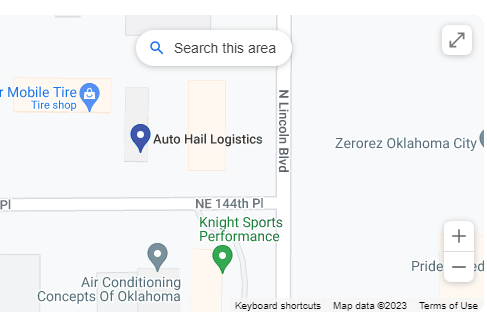Frequently Asked Questions
When hail hits, Auto Hail Logistics
is ready to restore your vehicle to its pre-storm condition with our industry-leading hail damage repair. Getting hail repair services on cars and trucks from Auto Hail Logistics is fast, and hassle-free.
To initiate your hail repair, follow these steps:
- Contact your auto insurance provider to see if the hail damage repair is covered in your policy. Every insurance company handles hail claims differently. Follow up with your agent if you do not know where to start the claim process.
- Get your truck or car's damage appraised either through your insurance agency's claim drive, field inspection, or through Auto Hail Logistics, a direct repair program.
- Clean the exterior of your vehicle to ensure that the best estimate can be given.
- Tell your adjuster that Auto Hail Logistics is your repair shop of choice.
- If Auto Hail Logistics is writing your estimate, our customer care center will assist you in getting an appointment scheduled.
- Schedule your repair with Auto Hail Logistics.
How Much Time Should I Allow for A Hail Estimate?
A standard hail estimate requires 30-45 minutes. During this time, the estimator follows a systematic format of identifying the severity and quantity of dents on all panels. In addition, the estimator communicates with you to answer all questions they may have about the repair and obtains all accurate vehicle information.
Is a Clean Vehicle Important?
A clean vehicle allows the estimator to see clearly the damage. Dust and dirt can often mask damage, causing inaccurate estimates and delays in the repair process.
What Happens During the Estimate Process?
During the estimate process, your estimator and/or the Auto Hail Logistics representative will greet you and will drive the vehicle into the estimating bay. Then, they appraise the vehicle, taking record of the scope of the hail damage as well as the severity and quantity of dents. The estimate is then finalized and reviewed with you. You will be provided with a printed copy of the estimate.
What Does Pre-Loss Condition Mean?
During the hail estimate process, any non-hail damage will be noted. The condition of the car, including this damage, is considered the pre-loss condition of the vehicle. Any damage that is not hail-related will not be covered on the repair.
At the time of the estimate, photos will be taken of the vehicle and any of these conditions will be noted in the estimate.
How Do I Schedule My Vehicle for Repair?
At the time of your estimate, you will be asked when you would like to schedule your vehicle for repairs. During an average hail storm, thousands of vehicles sustain damages, thus, it may be a few weeks before your scheduled appointment. Depending on the severity of your vehicle's hail damage, Auto Hail Logistics can provide two types of repairs on your vehicle. The first is to completely repair your vehicle utilizing the Auto Hail Logistics paintless dent repair (PDR) process. This normally takes a few days from the time of drop off, to the time of pickup to complete. The second involves the use of both the PDR process and conventional body shop repairs. This process is referred to as a Combination Repair. The time frame for this type of repair will vary from several days to longer depending on the severity of damage.
Auto Hail Logistics will work with you to determine the appropriate repair time following your estimate. If you are uncertain of your availability at the time of the estimate, Auto Hail Logistics can have a Customer Service Representative follow up with you in the next 48 hours to schedule the repair.
What Is a Supplement?
Supplements are additional operations or parts necessary to complete the repair of the vehicle that go beyond the original estimate. In some cases, the original estimate is insufficient to perform the repairs. When a vehicle is dropped off for repairs, a second inspection is done to determine if all of the damage was documented for repair. If all damage was found and written on the original estimate, no supplement is needed. However, if some damage was overlooked on the original estimate, a “supplement” is needed to document the necessary operations or parts needed to properly repair the vehicle.
If a supplement is required, it may extend the time period needed to repair your vehicle. The supplement will be explained to the customer along with an adjusted pick-up date.
What Is Paintless Dent Repair (PDR)?
Paintless Dent Repair is a specialized and meticulous process for returning dents to their original shape without having to paint any part of the vehicle.
The main process for PDR requires the technician to push and massage each dent in a very technical and precise manner. To do this, each dent is worked back to its original shape using different metal rods varying in size and shape. The dents are worked from the underside of the metal using access points on each panel. It is a very specialized and meticulous process that requires the finished metal to look like it came from the original factory.
What Is Conventional Body Repair?
Conventional body repair often replaces the panels on a car or truck and requires painting to match the factory finish. In some cases, hail damage is so severe that conventional body shop methods are necessary to repair certain panels. If there are too many dents or too many large dents, a panel may not be able to be repaired with PDR.
What Does R&I Mean?
R&I is an acronym that stands for Remove and Install. When a car starts the repair process, an R&I technician loosens, and sometimes removes, the interior panels and parts to allow access to the underside of the metal panel. When the PDR repairs get completed, this technician replaces the parts and re-installs the interior panels (like the headliner and hood liner). Auto Hail Logistics has a Quality Control Process to ensure that all parts are replaced properly so that your vehicle is returned to you in the same condition as we received it.





